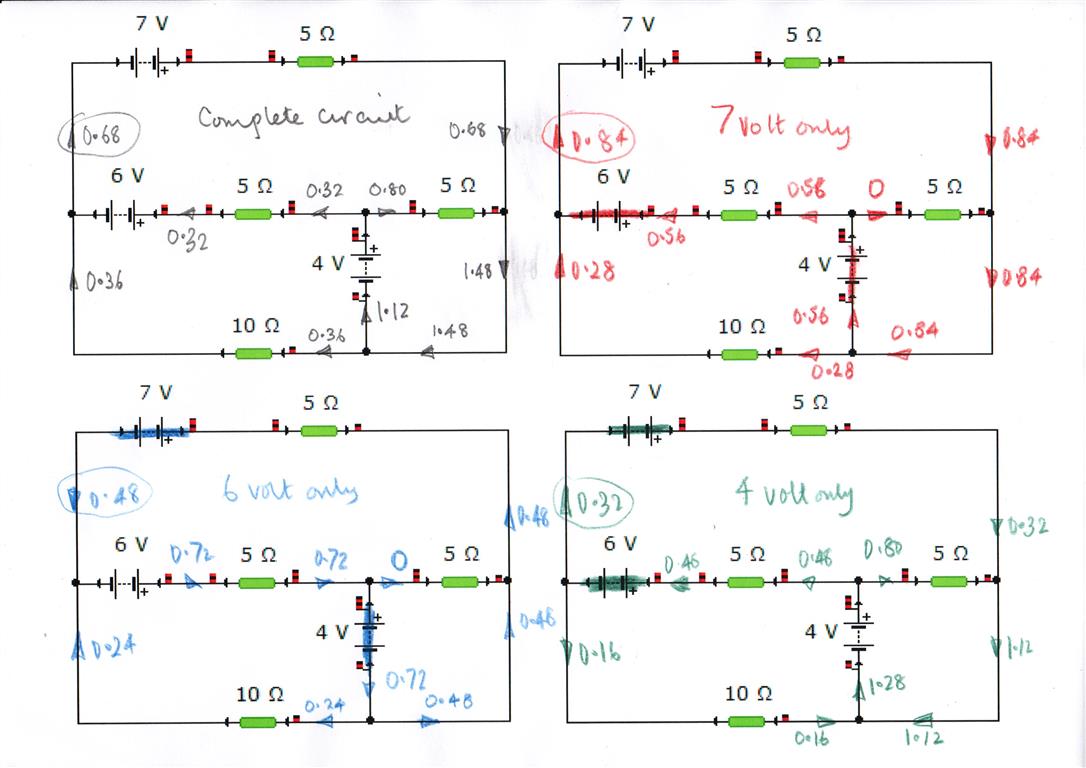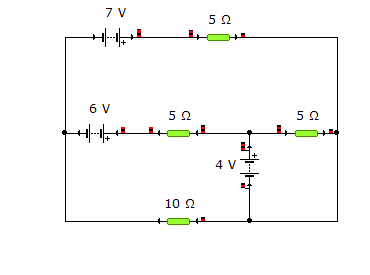If you connect two batteries and a resistor in series and the positive terminals of the two batteries are connected together then the battery with the larger emf will have current going out of its positive terminal and into its negative terminal.
The battery with the smaller emf will have current going out of its negative terminal and into its positive terminal and if it was a rechargeable battery it would be recharging with electrical energy from the other battery being converted to chemical energy.
Update
I have analysed you circuit and the currents in the circuit are a in to top left diagram.

Because the circuit components are linear the principle of superposition can be used to find out the contributions to the currents in the circuit due to each of the batteries.
In the top right diagram the $7$ volt battery was chosen and the $6$ volt and $4$ volt batteries were shorted out.
This was repeated for the other two batteries.
You will note that the ringed current value of $0.68$ in the top left diagram is the sum of the ringed currents in the other three diagrams and $0.64 + (-0.48) + 0.32 = 0.68$.
So the sum of the contributions to the current of each of the three batteries is equal to the actual current in the circuit.
The reason for doing this is to show that unless the circuit is relatively simple it is very difficult to predict which way the a current will flow throough a battery.


